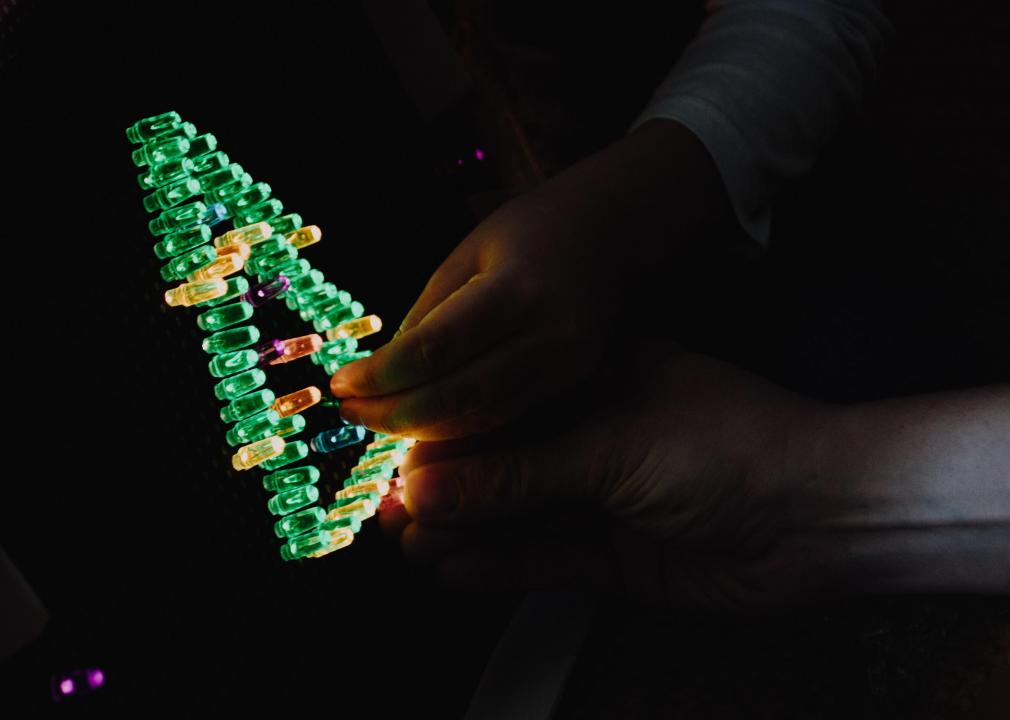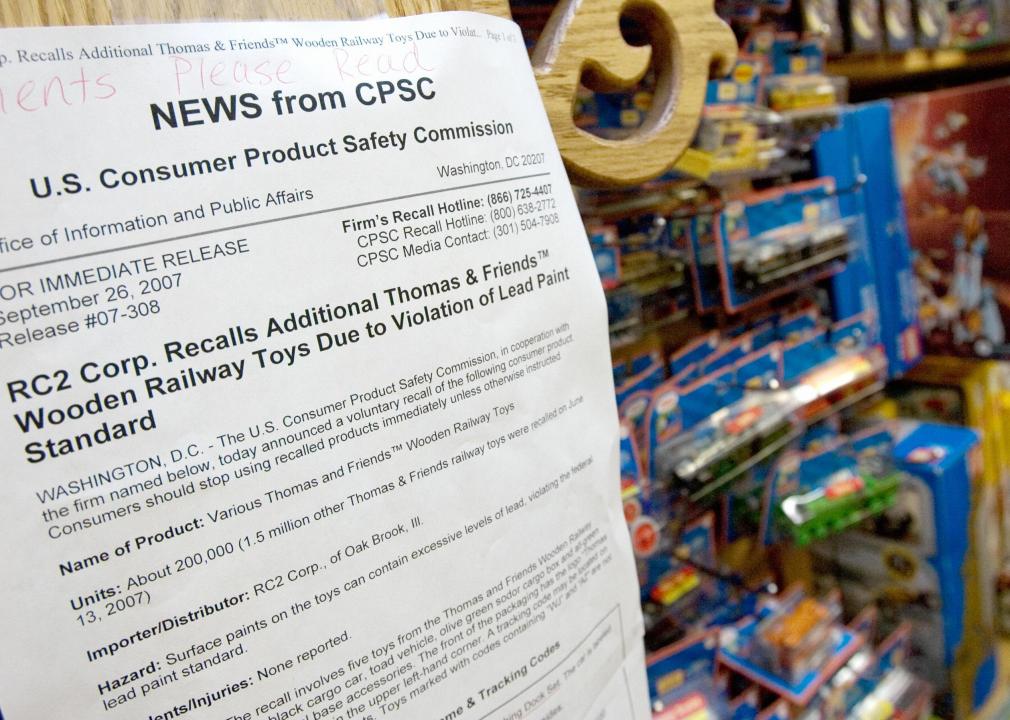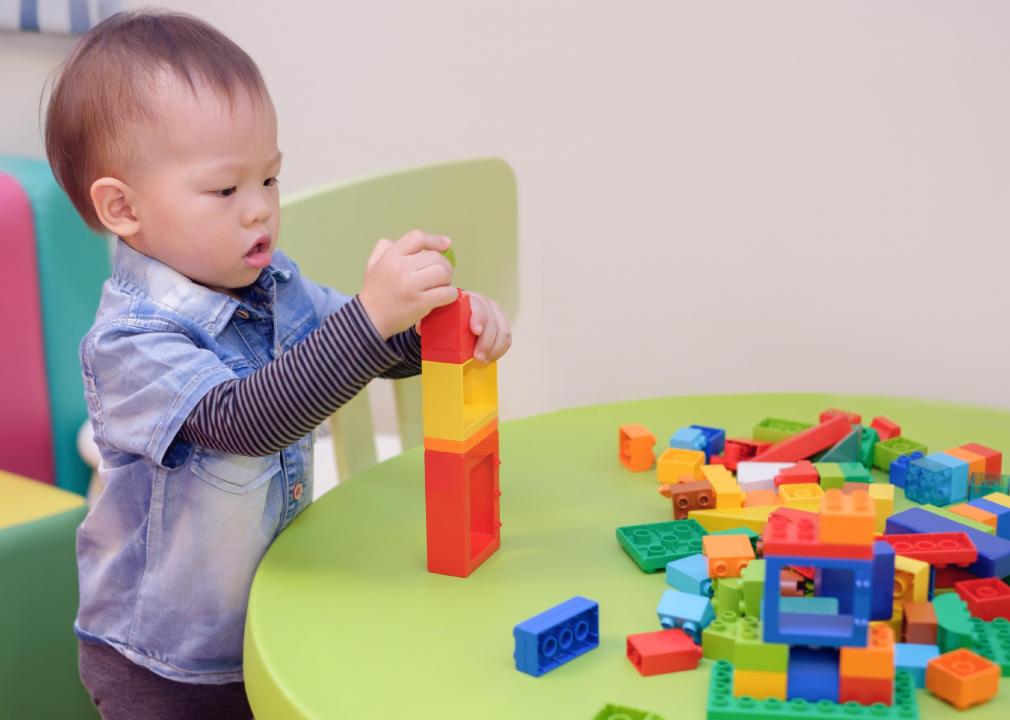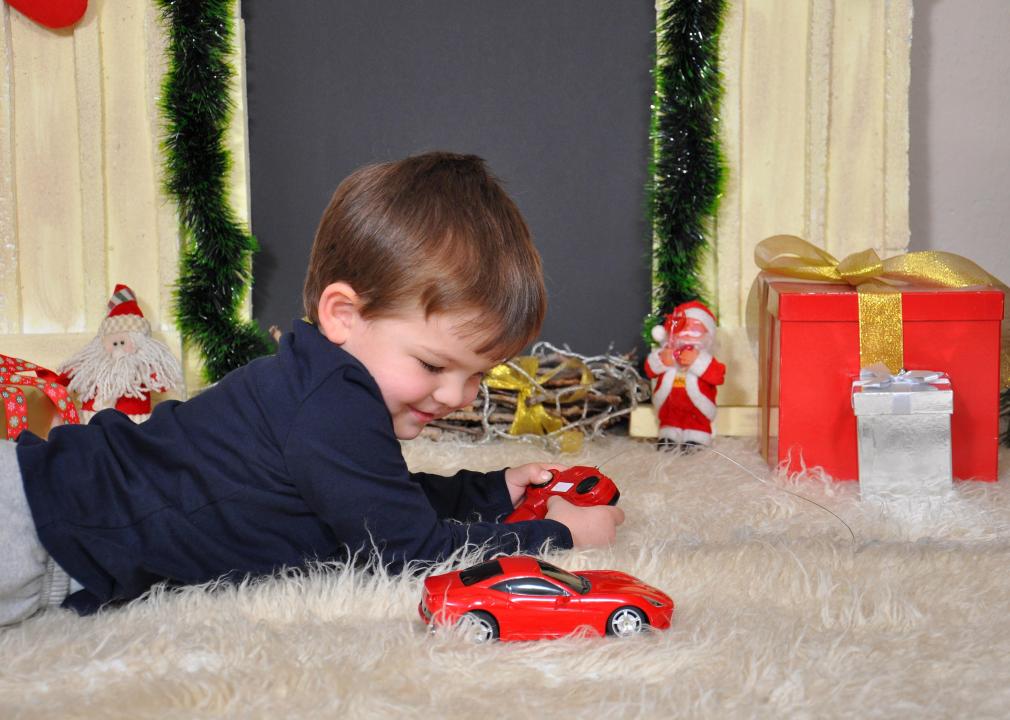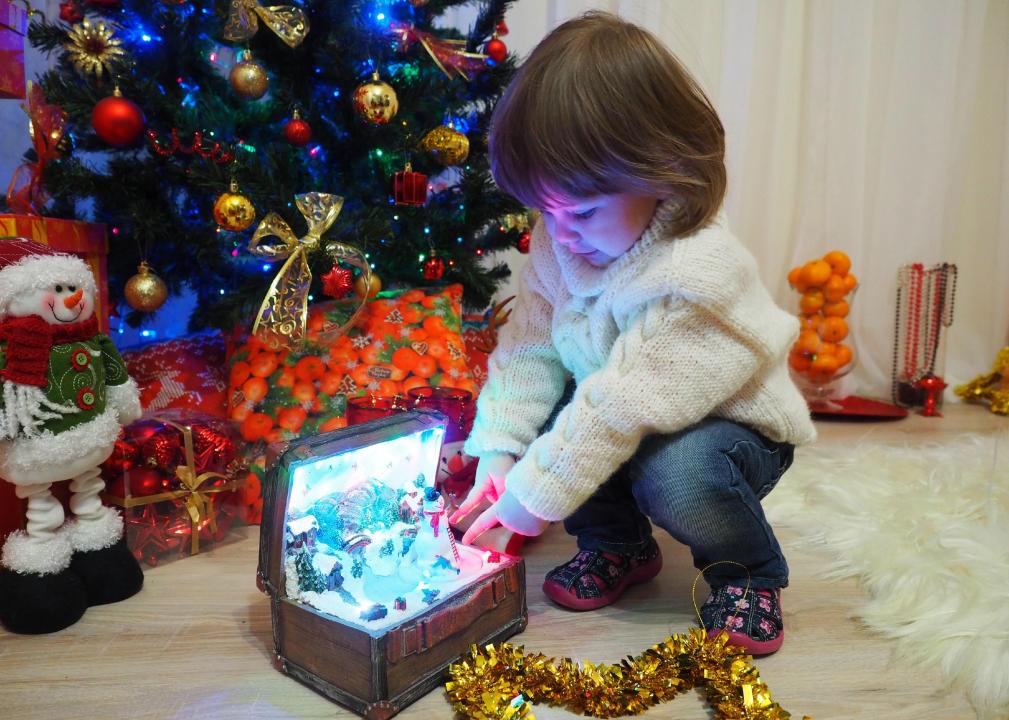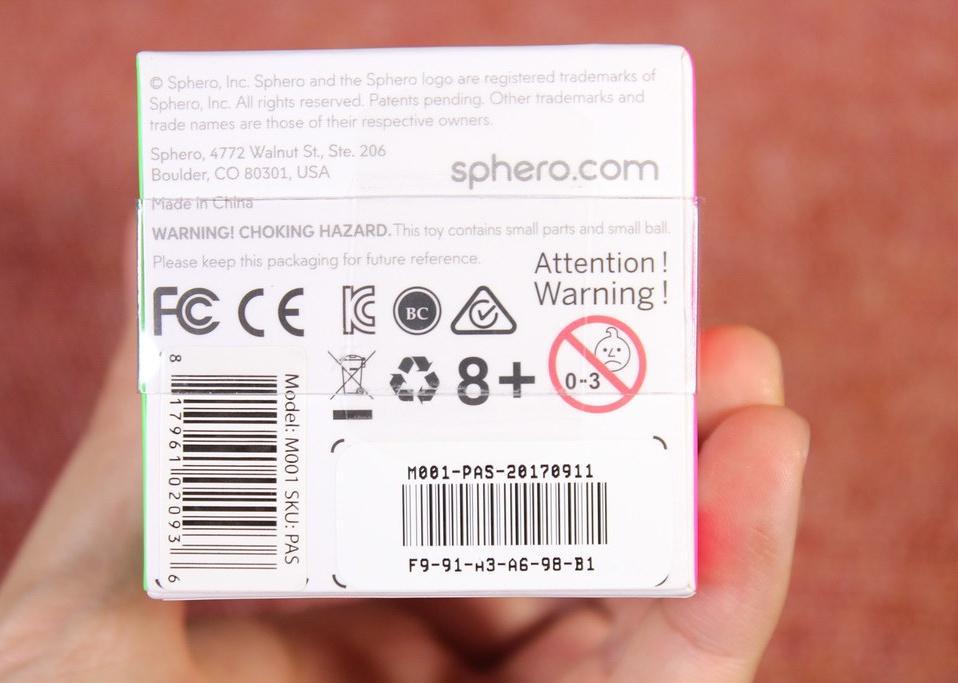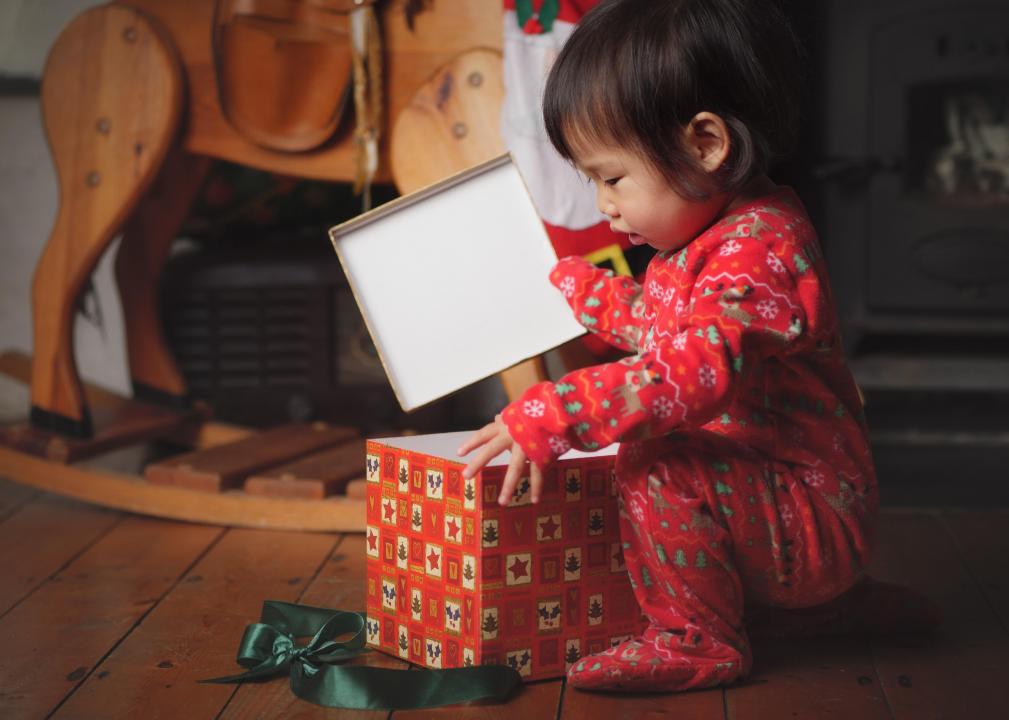Tips for holiday toy safety
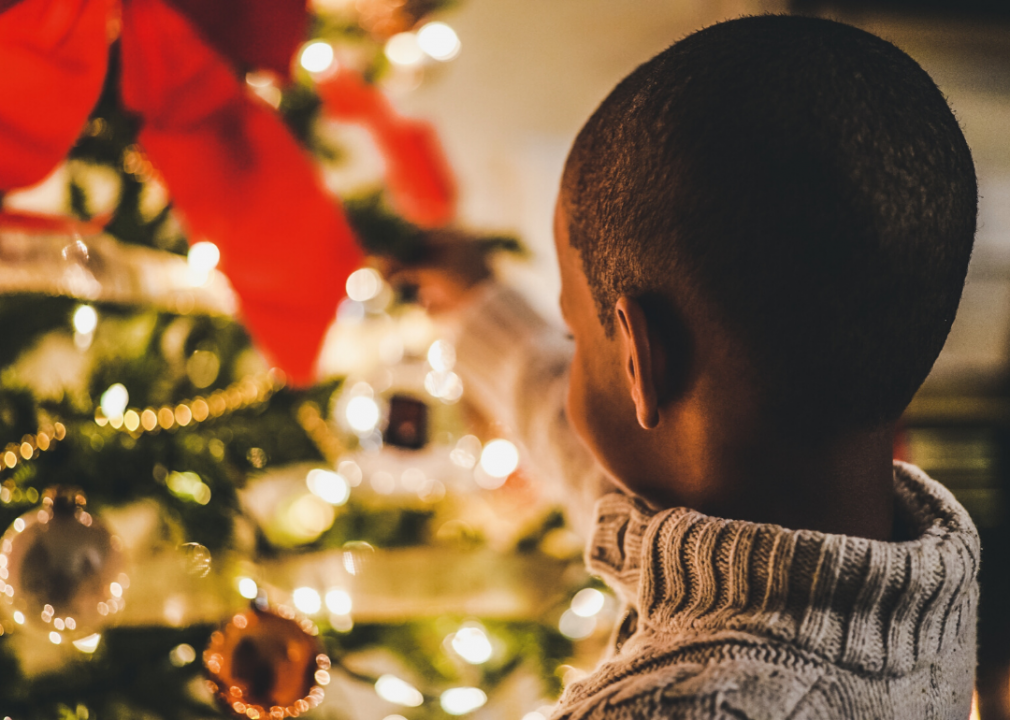
Unsplash
Tips for holiday toy safety
’Tis the season to be jolly—and to spend a lot of money bringing cheer to your loved ones. Holiday retail sales in 2021 are expected to be somewhere between $843.4 billion and $859 billion—an increase between 8.5% and 10.5% over sales over 2020, according to the National Retail Federation (NRF). The average consumer, the NRF found, will spend about $998 in the holiday season between gifts, food, decorations, and other holiday-related purchases.
Being inundated with all the bells and whistles of ads and wish lists can make it hard to suss out which toys are most appropriate for children’s gifts. And while adults may disagree on budget, wastefulness, or exactly how many L.O.L. dolls one child truly needs, we can all agree that safety is the baseline.
To that end, Stacker used a variety of holiday and safety resources to compile a list of 15 tips for holiday toy safety. Our list is not about toy recalls, per se; although we tell you where to check for toys that should not be on your list. We curated the top tips for not only toys, but ancillary items you may not consider dangerous such as batteries, decorations, and wrapping.
In a 2020 report issued by the U.S. Consumer Product Safety Commission, it was noted that nearly 150,000 children were treated for toy-related injuries in hospital emergency departments in the United States. We hope that you take a few minutes to click through our slideshow and read the tips to keep your child safe this holiday season. Whether you are purchasing a toy or device, reviewing instructions on how to assemble or use a toy, or selecting decorations, please be safe.
You may also like: States getting the least (and most) sleep
![]()
Unsplash
Purchase age-appropriate toys
Take a moment to read the age level of the toy you are buying. The American Academy of Pediatrics notes the importance when buying toys to not only look at the age level but also be aware that the toys match the ability, skill, and interest level of your child. Advanced toys may frustrate your child and/or pose safety hazards when in the hands of younger children.
Canva
Ensure children ride safely
Whether you buy your child a bike, toy car, or scooter, be sure they are riding in a safe place and wearing proper equipment. Helmets are essential when children are riding bikes, scooters, Segways, and other objects where their heads need protecting.
SAUL LOEB // AFP via Getty Images
Check for toy recalls
The United States Consumer Product Safety Commission has a recall list of products that have been taken off the shelves. The site also includes statistics, blogs and, alerts.
Canva
Choose toys to bolster development for babies and toddlers
Give your baby or toddler a head start by selecting educational toys. Cup toys are great for babies up to 1 year old while building toys are ideal for toddlers. Along with choosing safe toys, selecting educational ones helps build cognitive and motor skills.
Canva
Set rules for devices
Overuse of digital devices can have long-term negative effects on a child. Risks include lack of sleep, social and learning delays, and behavioral problems. Set rules like no devices at dinnertime or bedtime.
You may also like: The best streaming services in 2021
Ivan Marjanovic // Shutterstock
Use caution when selecting toys with button batteries
While some toys require button batteries to operate, they can pose harm for children. Serious stomach, throat, and intestinal problems have been reported after children swallowed button batteries. Be mindful that button batteries are also found in musical greeting cards and other small electronics.
Canva
Look for labeling that says ‘non-toxic’
Avoid buying toys that contain toxic materials; consider young children may be inclined to chew on their toys. Double-check to make sure the toy materials are clearly labeled “non-toxic.”
PxHere
Avoid toys with small pieces for young children
Choking hazards are a danger for young children who play with toys containing small pieces. Think big when buying toys. The pieces should be larger than your child’s (and/or pet’s) mouth.
GEEK KAZU // Flickr
Carefully read all labels and instructions
Be sure to read all warning labels and instructions before you allow your child to play with a new toy. Also review instructions and warning labels with your child.
Canva
Know the purpose of digital devices
Be mindful of the intent of the device you are gifting. While it’s convenient to give your child a device, such as a tablet, so you can focus on a task or run errands, new research illuminates that delayed learning of language skills can correlate to media use in young children.
You may also like: States where people live the longest
Canva
Beware of strings and ribbons
Take extra care to remove ribbons, tags, and strings from gifts before presenting them to young children. Pull toys with strings over 12 inches long may present a strangulation hazard for babies.
PxHere
Use protective eyewear with sports equipment
Be sure to give children the appropriate protective eyewear with polycarbonate lenses (which are less likely to shatter). Check in with your child’s ophthalmologist to get educated about protective gear recommendations for the specific sport your child is playing.
Canva
Supervise young children
While the holidays can be a busy and stressful time of the year, it is important to keep your eyes on your young child—especially when they are playing with a new toy. Take extra precaution when they are playing with toys or games that may cause an eye injury (think: toys that launch/shoot objects).
Pexels
No balloons
If there are small children on your party list, forego the balloons this year from your holiday decor or games. The U.S. Consumer Product Safety Commission cautions about the potential suffocation hazard by uninflated toy balloons and broken balloon pieces.
Pexels
Nix the noisy toys for toddlers
Did you know that toys designed for infants and toddlers may cause hearing damage because of the volume? Young children are particularly at risk as they hold objects close to their ears and face. Listen to the product before you buy it and make modifications such as adding tape over the speaker or removing the batteries.
You may also like: The best streaming services for football in 2021
